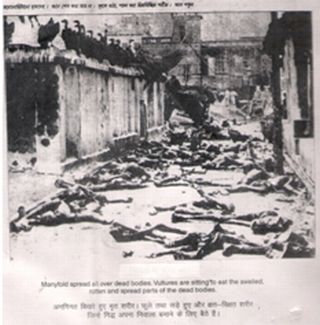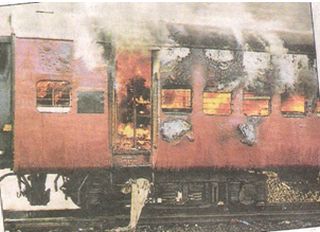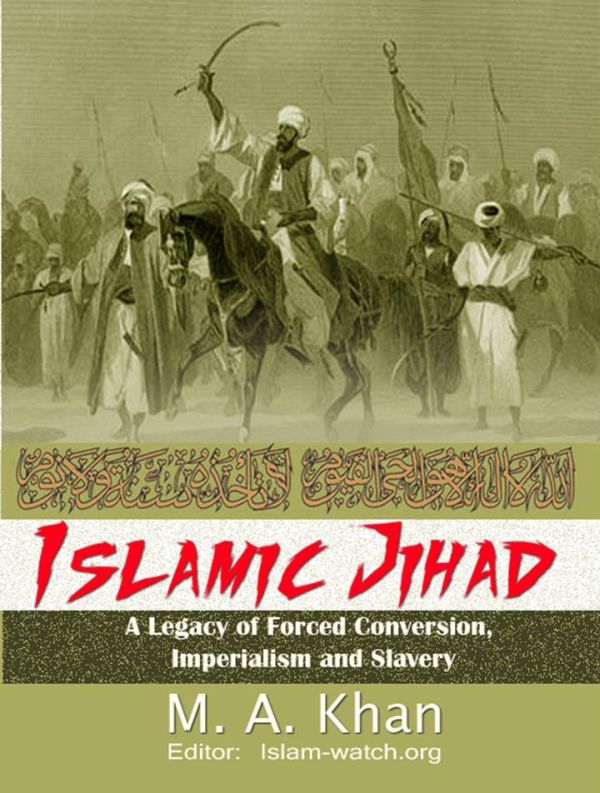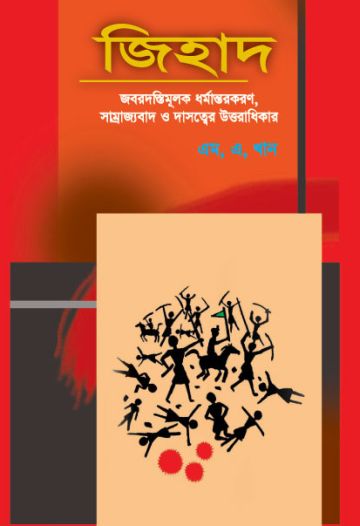To take the Muslim-appeasement further, the current India government is trying to pass a new bill, called “Prevention of Communal and Targeted Violence (Access to Justice and Reparation) Bill, 2011”, which will turn Muslims into "untouchable lords" of the country.
In the previous article, it has been mentioned how the so-called United Progressive Alliance coalition government in Delhi, led by Congress party, is appeasing Muslims by offering them unfair, undemocratic, non-secular and even illegal privileges and concessions, which Muslims can enjoy only in a typical Islamic State. The reader may gauge the extent of Muslim appeasement in PM Manmohan Singh's statement, saying: Muslims are the first to claim the produce of India. What is the basis of such a stupid comment? Does the Muslim contribute maximum share of India’s GDP? Another Congress leader, Digvijay Singh, to appease the aggrieved Muslim community at the killing of Osama bin Laden, reverentially referred Osama "Osamaji" and bemoaned the fact that the terrorist leader was not given a solemn burial.
To take the Muslim-appeasement further, the UPA government is currently trying to pass a new bill, called “Prevention of Communal and Targeted Violence (Access to Justice and Reparation) Bill, 2011”, which will turn Muslims into "untouchable lords" of the country. It is needless to say that the UPA government doing this with an eye on vote-bank politics.
The drafting of the Communal Violence Bill
The so-called Prevention of Communal and Targeted Violence (Access to Justice and Repatriation) Bill, 2011 has been prepared by the National Advisory Council (NAC), headed by Sonia Gandhi, the president of Congress Party, supposedly aiming to provide effective prevention and control of communal and sectarian violence, and justice and comprehensive reparations to survivors and victims of such violence. The committee is consisted of a coterie of soft Islamists and Islam-appeasing intellectuals and community leaders (see note)[i]. Commenting on the formation of the committee, Sam Rajappa, in his article Communal Violence Bill says, “The very fact that Parliament was bypassed and the undemocratic National Advisory Council, acting as a supra Parliament, was entrusted the task of drafting the most sensitive legislation, makes the UPA government a suspect. Harsh Mander and Farah Naqvi, conveners of the advisory group to prepare the draft Bill, are known for bashing Narendra Modi, Chief Minister of Gujarat, and do not enjoy the confidence of the public” (The Statesman, June 4, 2011).
“The NAC is a conglomeration of NGO members handpicked by Sonia Gandhi for their faith in the Nehru-Gandhi dynasty. Most of these NGOs are foreign-funded and they act according to the wishes of donors. It is indirect interference in the affairs of the nation by foreign countries. The NAC chairperson has become a supra Prime Minister and an instrument for maladministration”, Rajappa adds.
Salient points of the draft
The most crucial part of the draft for the Communal Violence Bill 2011 is the definition of the term ‘group’. The basis of such groupings may be religion, mother tongue, ethnicity and caste, e.g. schedule castes and schedule tribes. The next important step is to decide whether a group consists of the people of minority or the majority community. On the basis of whole of India, religion-wise Hindus are a majority, and Muslims and Christians are a minority, which has been used as the definition in the Bill. But such identification is utterly faulty, because in many states, e.g. Jammu and Kashmir, Punjab, Mizoram, Manipur, Meghalaya and Nagaland, and in the Andaman and Nicobar islands, Hindus are minorities. The most troubling part of the draft Bill is the assumption that communal troubles are created only by members of the majority community, namely Hindus. From this foundational presumption, only Hindus will be held responsible and punished for any incident of communal violence. Therefore, for a incident of communal violence between Hindus and Muslims in Jammu and Kashmir, where Muslims constitute more than 80% of the population, only Hindus will be held automatically responsible and punished, even if Muslims might have initiated the violence to persecute the Hindus, which they do on a regular basis.
Thus, if the draft becomes a law, Hindus will be held automatically responsible for violence, perpetrated by other communities in many parts of India, where they form a minority group.
 Vultures feed on corpses of victims of "Great Calcutta Riots" August, 1946 |
The underlying theme of the upcoming Bill is that only Hindus perpetrate communal violence in India. But history informs us that most of incidents of Hindus-Muslims violence in pre- and post-independence India were instigated and initiated by Muslims. The Mopla Riot in Malabar, Kerala (August 20, 1921) is one of the most famous incidents of Hindu communal violence that was initiated by Moplahs (Muslims). It is known as a Hindu-Muslim riot, when it was actually a pogrom of Hindus by the Moplahs. Another famous incident of communal violence is the “Great Calcutta Killings” that took place in August, 1946. It is also called the “Direct Action Day” by the historians. August 16 was Friday and that too in the month of Ramadan according to the Arabic calendar. It was therefore the holy day of the holiest month for the Muslims. On that holy day, responding to Jinnah-led Muslim League's call for "Direct Action", lakhs of Muslims gathered under the Ochterlony Monument (now Shahid Minar) to offer Jumma prayer. After the prayer and speeches by prominent Muslim League leaders, Muslims unleashed discriminate attacks upon the Hindus (and other non-Muslims), killing them, looting their shops, and setting Hindu shops and houses on fire. The killing of the Hindus and Sikhs, and vandalism of their properties went on for one and a half day before they struck back at Muslims.
Similar is the case of 2002 Godra riots in Gujarat, assumed by most, as initiated by the Hindus. In reality, the violence was initiated by the Muslims by setting the coach S-6 of the Sabarmati Express on fire on February 27 at Godhra and burning 59 Hindu devotees, including women and children, alive. This barbaric incident instigated the Hindus to strike back at Muslims that claimed over 1,200 lives, predominantly Muslims.
So, in almost all incidents of Hindu-Muslim violence, whether in Muslim-majority and -minority areas, are initiated by Muslims, generally inspired by the Koran's holy doctrine of jihad to kill the infidels, especially idol-worshippers, such as the Hindus. So, the core presumption of the Communal Violence Bill 2011 that majority Hindus would, by default, be held responsible and punished for any incidents of Hindu-Muslim violence is patently discriminatory, unfair and illegitimate. Such a view is totally opposed to the secular principle laid down in the Constitution of India that holds ‘an offence is an offence and the offender should be punished, irrespective of to what group he belongs’.
Another devastating provision
 Coach S-6 of Sabarmati Express train set on fire |
The other devastating provision of the draft is that if an individual of the minority community accuses an individual to the majority (Hindu) community, of propagating hatred, police will have the right to arrest the accused and put her/him behind the bar without an investigation. The accused would not even have the right to know who the complainant is. In trial, the complaint is by default true until the victim proves his innocence. So, author Arindam Chaudhuri has claimed that the bill will kill secularism in India (The Pioneer, June 4, 2011), adding: “The NAC-drafted Communal Violence Bill is a recipe for unmitigated disaster. In the guise of promoting communal harmony it promotes rank communalism. In the guise of protecting minorities, it attacks Hindu rights. This Bill will strike at the very foundation of liberty and legitimize criminal misdeeds of Muslims. It must not become law.”
Conclusion
This discussion suggests that the draft of the Communal Violence Bill 2011 has been framed with a strong motive of appeasing Muslims and other minority communities so as to capture their votes. And this will place the Hindus in a discriminated and disadvantaged position, depicting them as the only religious community capable of causing religious violence in India. The provisions of the draft, therefore, grossly violate the principle of secularism, democracy and equality enshrined in the Constitution of India. And if it becomes a law, it would be a disaster for the Hindus and will acts as a lethal weapon at the hands of Muslims for the aggressive Islamization of India through Jihadi violence or any other means.
[i] The following are the members of the Advisory Group Members Communal & Sectarian Violence Bill, 2010 Advisory
(1) Abusaleh Shariff, (2) Asgar Ali Engineer, (3) Gagan Sethi, (4) H.S Phoolka, (5) John Dayal, (6) Justice Hosbet Suresh, (7) Kamal Faruqui, (8) Manzoor Alam, (9) Maulana Niaz Farooqui, (10) Ram Puniyani, (11) Rooprekha Verma, (12) Samar Singh, (13) Saumya Uma, (14) Shabnam Hashmi, (15) Sister Mary Scaria, (16) Sukhdeo Thorat, (17) Syed Shahabuddin, (18) Uma Chakravarty, (19) Upendra Baxi, (20) Aruna Roy, NAC Working Group Member, (21) Professor Jadhav, NAC Working Group Member and (22) Anu Aga, NAC Working Group Member
The Joint Conveners of the Advisory Group are (1) Farah Naqvi, Convener, NAC Working Group and (2) Harsh Mander, Member, NAC Working Group
The members of the Drafting Committee are (1) Gopal Subramanium, (2) Maja Daruwala, (3) Najmi Waziri, (4) P.I. Jose, (5) Prasad Sirivella, (6) Teesta Setalvad, (7) Usha Ramanathan (upto 20 Feb 2011) and (8) Vrinda Grover (upto 20 Feb 2011).
The conveners of Drafting Committee are (1) Farah Naqvi, Convener, NAC Working Group and (2) Harsh Mander, Member, NAC Working Group.



Comments powered by CComment